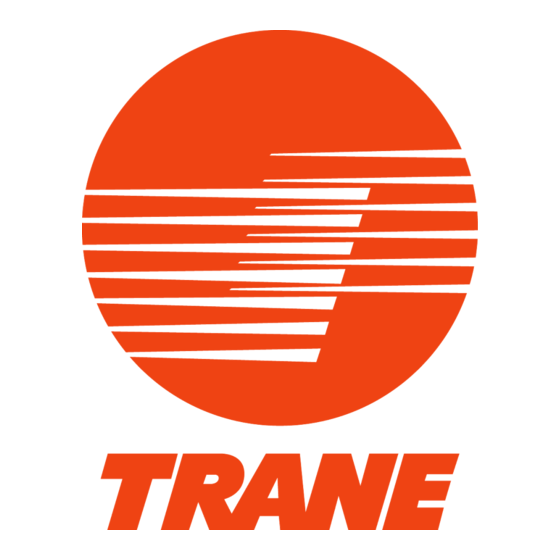Table of Contents
Advertisement
Installation, Operation, and Maintenance
Outdoor Rooftop Gas-Fired Duct
Furnace
Natural or Power Vented
M M o o d d e e l l s s : :
GRAA
GRDA
GRBA
GFAA
GRCA
GFBA
Only qualified personnel should install and service the equipment. The installation, starting up, and servicing of heating, ventilating, and air-conditioning
equipment can be hazardous and requires specific knowledge and training. Improperly installed, adjusted or altered equipment by an unqualified person
could result in death or serious injury. When working on the equipment, observe all precautions in the literature and on the tags, stickers, and labels that
are attached to the equipment.
August 2020
GFCA
GFDA
S S A A F F E E T T Y Y W W A A R R N N I I N N G G
M M U U A A - - S S V V X X 0 0 0 0 4 4 B B - - E E N N
Advertisement
Table of Contents

Summarization of Contents
Outdoor Rooftop Gas-Fired Duct Furnace
SAFETY WARNING
Critical cover warning regarding installation and servicing by qualified personnel.
Introduction
Warnings, Cautions, and Notices
Explanation of advisory symbols used throughout the manual for safety.
General Safety Information
Personal Protective Equipment (PPE) Required!
Mandatory safety gear for technicians to prevent injury during work.
Receiving Instructions
Rigging, Location, and Mounting
Procedures for lifting, selecting site, and installing the unit.
Specifications
Dimensional Data
Key dimensions and clearances for furnace installation.
Performance Data Curves
Furnace Performance Curves
Graphical data for furnace performance based on airflow and temperature.
Bypass Sizing Information
Use of Bypass Curves
Methodology for determining bypass duct width for airflow.
Installation
Clearances and Combustible Materials
Safety requirements for space and proximity to combustible materials.
Venting
Proper Venting and CO Hazards
Ensuring safe exhaust and preventing carbon monoxide poisoning risks.
Gas Connections
Explosion and Fire Hazards
Safety precautions during gas piping installation and connection.
Electrical Connections
Hazardous Voltage and Electrocution Risk
Safety procedures for handling electrical components and preventing shocks.
Operation
General Information and Burner Components
Overview of unit operation and identification of burner parts.
Controls
Key Control Functions
Description of high limit, pilot, and pressure regulator controls.
Gas Controls
Single, Two-Stage, and Modulating Control Operation
Explanation of how different gas control modes function.
Air Throughput
Air Filters and Throughput Safety
Maintenance of air filters and safety related to airflow.
Primary Air Shutter Adjustment
Adjusting Airflow for Combustion
Procedure for adjusting primary air shutters for optimal combustion.
Pilot Adjustment
Adjusting the Pilot Flame
Steps to properly size and adjust the pilot flame.
Gas Input Adjustment
Checking Gas Input Methods
Techniques for verifying gas input using meter or pressure.
Start-Up
Pre-Start Checks and Heating Mode Start
Initial procedures and steps for starting the unit in heating mode.
Maintenance
Safety Device Checks and General Maintenance
Essential service tasks including safety checks and component servicing.
Troubleshooting
Gas Odor and Ignition Issues
Diagnosing and resolving problems related to gas odor and ignition.
Troubleshooting
Power Venter Motor Issues
Diagnosing and resolving problems with the power venter motor.
Gas Equipment Start-Up
Pre-Inspection and Operational Checks
Final inspection and operational verification before use.












Need help?
Do you have a question about the GFCA and is the answer not in the manual?
Questions and answers